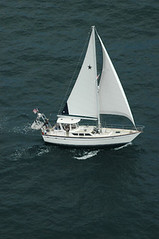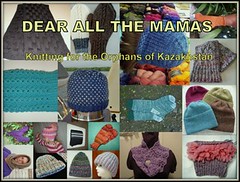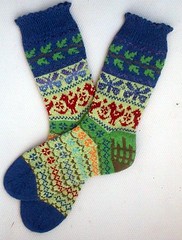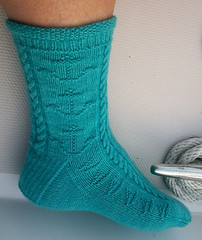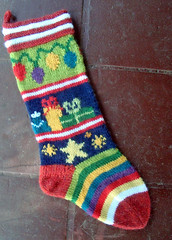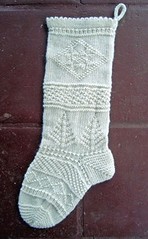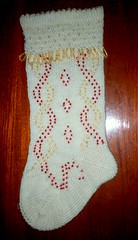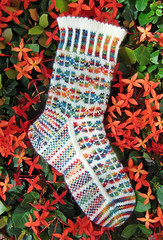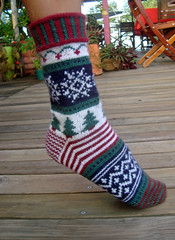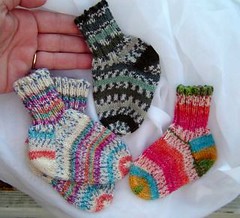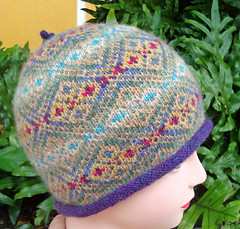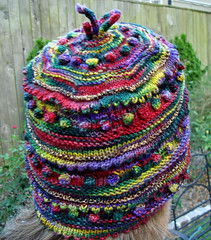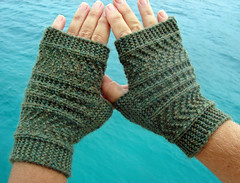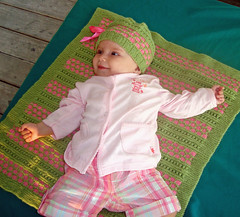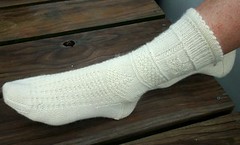
Monday, March 15, 2010
Isla Pinos TuPak
 Captain's Log December 1, 2009
Captain's Log December 1, 2009We safely arrived from the long and relatively easy overnight passage from Colombia to our first landfall on the beautiful island of Isla Pinos, Panama. That's the name on our navigation charts. The local Kuna indians call this "TuPak" (Whale Island). Unlike most of the 400+ islands of
 the Kuna Yala region, this one is not a coral atoll, but is a rock island and has height! On that first day we didn't go ashore. That's the norm for us - we're not spring chickens anymore and the distrubted sleep cycles of passage-making do us in.
the Kuna Yala region, this one is not a coral atoll, but is a rock island and has height! On that first day we didn't go ashore. That's the norm for us - we're not spring chickens anymore and the distrubted sleep cycles of passage-making do us in.That afternoon, we were visited by a friendly English-speaking Kuna named David. He paddled up to our boat in his
 ulu dugout canoe which was loaded with limes and freshly dug up yucca. Yucca is a starchy root that is one of the Kuna indians primary sources of calories. This plant is known as cassava or tapioca in other parts of the world. We had eaten chunks of yucca in soup in Colombia but didn't care for it. It is quite bland and starchy. David offered to take us o
ulu dugout canoe which was loaded with limes and freshly dug up yucca. Yucca is a starchy root that is one of the Kuna indians primary sources of calories. This plant is known as cassava or tapioca in other parts of the world. We had eaten chunks of yucca in soup in Colombia but didn't care for it. It is quite bland and starchy. David offered to take us o n a tour of his village and island on the following day trekking all the way up to the tower on top of the mountain.
n a tour of his village and island on the following day trekking all the way up to the tower on top of the mountain.The village is one of the nicest Kuna villages that we have visited! It is clean
 and quiet. Grass grows between the houses and flowering plants grow along the sides of some of the thatch-roofed houses. The people here have small plots of land on the mainland that they farm. They grow bananas, plantains, corn, squash, citrus fruits and root vegetables such as yucca and taro (dasheen). This village also grows cacao which you can see beans in the photo here with the indian corn. Cacao is the source of
and quiet. Grass grows between the houses and flowering plants grow along the sides of some of the thatch-roofed houses. The people here have small plots of land on the mainland that they farm. They grow bananas, plantains, corn, squash, citrus fruits and root vegetables such as yucca and taro (dasheen). This village also grows cacao which you can see beans in the photo here with the indian corn. Cacao is the source of  chocolate!
chocolate!Each morning the women and men paddle or sail their canoes over to the mainland to work their plots. The pace of travel, and life in general is slow and easy. They will harvest enough food for that day and return home.

Life is simple. There is little in the way of furniture or posessions, just a stool or two and the hammocks strung up from the ceilings for sleeping and sitting. In the corner of the homes will be a small fire pit for cooking. Breezes can float in through the vertical cane walls and life on the outside can be observed while the re
 sidents are obscured by the dark interior.
sidents are obscured by the dark interior.Our first order of business is to visit the tribal Silas (chief) and pay our visitor fees ($5 per boat + $2 per person for access to the hiking trail). The chief performs his duties in the community center (Congresso) which is pictured here. The chief hangs out (literally) in the hammock while local residents will sit on the wooden benches.
After paying our fees, we met up with some French people from a couple of other sailboats and started the 45-min. uphill trek  to the top of the mountain through the rainforest.
to the top of the mountain through the rainforest.
Oh wow! It was hot and humid! We trodded along on a slippery mud trail that was actually well marked thanks to work from the local tribe. This trail is a source of cash. A misty type of rain fell in short periods - not enough to cool you off, but just enough to mix with you r sweat and trickle down your face and body. But at least we were always in the shade of the forest canopy!
r sweat and trickle down your face and body. But at least we were always in the shade of the forest canopy!
David showed us this little green spotted frog. Sorry for the blurry photo but this guy could really jump! The roots an d vines looked like snakes at times and would make me jump too!
d vines looked like snakes at times and would make me jump too!
Finally we reached our goal which was the top of the hill. But the forest obscurred the view! No problem, climb the tower up there which is a "repeater" f or phone service (but not for this village). Hmm...how about if I just give my camera to David and let him take photos instead? So here's a view from the top looking out over the very wild Panama mainland.
or phone service (but not for this village). Hmm...how about if I just give my camera to David and let him take photos instead? So here's a view from the top looking out over the very wild Panama mainland.

Power is supplied to the tower by giant solar panels as there is no source of electricity on this island. Here's a pic of me under the shade of the solar panels taken by David as he climbed up the tower. Of course, the guys were all ga-ga over the solar panels. But wait! What's that?

Oh my gosh! The guys all hover around a cement bunker to take a look at the size of the storage batteries. Yep, there we were in a beautiful, pristine rainforest environment with plenty of wildlife and the guys show more interest in big batteries. I guess they had had enough "nature" for one day. So we trudged on back down the hill.
 Our guide, David (red shirt in the photo) found some little monkeys up in the trees and he called for them to come closer by "chirping" with his mouth. They were so cute, but not stupid. They stayed far enough away that I couldn't get a good photo of them.
Our guide, David (red shirt in the photo) found some little monkeys up in the trees and he called for them to come closer by "chirping" with his mouth. They were so cute, but not stupid. They stayed far enough away that I couldn't get a good photo of them.
What a great day we had!

So...take a look at this great tool for cracking coconuts. Coconuts are the main source of cash for the Kuna people and they sell them to the Colombia trading vessels (or trade them for manufactured goods). Never pick up a coconut. They are like money. Anayway, I
 don't have a coconut cracker like this on the boat and I don't have a machete to hack open green coconuts (yet).
don't have a coconut cracker like this on the boat and I don't have a machete to hack open green coconuts (yet).Besides, that all sounds like way too much work. I'll just go sit inthe warm, clear water.
<< Home


